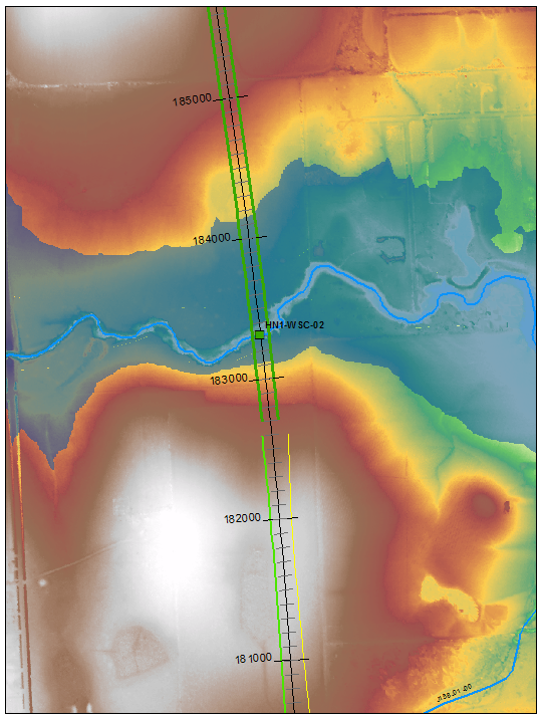How Drainage Analysis, Innovation Drive the Texas Central High-Speed Train
In order to connect passengers between Dallas and Houston in 90 minutes, the proposed Texas Central High-Speed Rail must cross the Trinity River and numerous other streams, drainage ways and floodplains.
Freese and Nichols played a key role in developing the first privately developed high-speed train project in North America. To examine alignment alternatives for the high-speed train, nearly 900 drainage crossings with a combined drainage area of 7,000 square miles were studied to identify cross-drainage infrastructure, mitigation and freeboard requirements. FNI developed a number of innovative tools to assist with this massive undertaking.
Building GIS Automation Tools
 In order to meet an aggressive project delivery schedule, our team developed many GIS-based processes and other tools to automate the analysis and standardize data management where possible with custom tools. By utilizing batch processing, new alignments could be analyzed in less than an hour, saving what could be days or weeks of manual analysis. Some of the automation tools developed were used to:
In order to meet an aggressive project delivery schedule, our team developed many GIS-based processes and other tools to automate the analysis and standardize data management where possible with custom tools. By utilizing batch processing, new alignments could be analyzed in less than an hour, saving what could be days or weeks of manual analysis. Some of the automation tools developed were used to:
- Intersect numerous iterations of rail alignments and ROW corridors with streams and floodplains to identify conflicts which would require drainage crossings
- Automatically delineate contributing drainage areas to identified rail crossings using Digital Elevation Models (DEM)
- Evaluate freeboard and bridge span requirements for drainage crossings
- Assist with data summary, cost estimating and QC Review
Developing Hydrologic Analysis Tools
Furthering the use of time-saving automation tools, the team developed applications to aid in the development of design flows used in the analysis. Drainage Area parameters such as area, longest flow path length and slope, time of concentration, and SCS Curve Number were calculated within one tool, which then generated a file which could be read by HEC-HMS and included all subbasins in the correct geospatial location. This simplified the Hydrological analysis, minimized subjectivity in the analysis, and saved substantial time.
Creating a Culvert Hydraulic Analysis Calculator
In addition to the GIS and hydrologic tools, a special hydraulic analysis tool was developed in the form of a Culvert Calculator. The Culvert Calculator was populated with a database of flow capacities for numerous culvert configurations, including 56 different culvert sizes, 11 different slopes, and 7 different lengths. By doing this work ahead of the overall analysis, significant time was saved by allowing team members to input site parameters and to receive a range of options for the efficient passage of the design flow.
Utilizing Detailed HEC-RAS Modeling
Near its Dallas section, the train will cross a portion of the Trinity River segment of the U.S. Army Corps of Engineers Dallas Floodway Project, thus requiring a Section 408 permit approval. For the Trinity River crossing, FNI performed detailed modeling using HEC-RAS to evaluate the hydraulic impacts of installing piers within the Dallas Floodway project footprint. The model was also used to determine measures necessary to mitigate impacts to the 100-year and Standard Project Flood water surface elevations, achieve a no-rise condition, ensure no increase in erosive velocities and minimize losses in floodplain storage volume.
The nature of the Texas High Speed Rail project, with its aggressive schedule, broad scope and importance to the state, necessitated innovations in many categories and helped deliver a quality product on time and keep this project on track.


